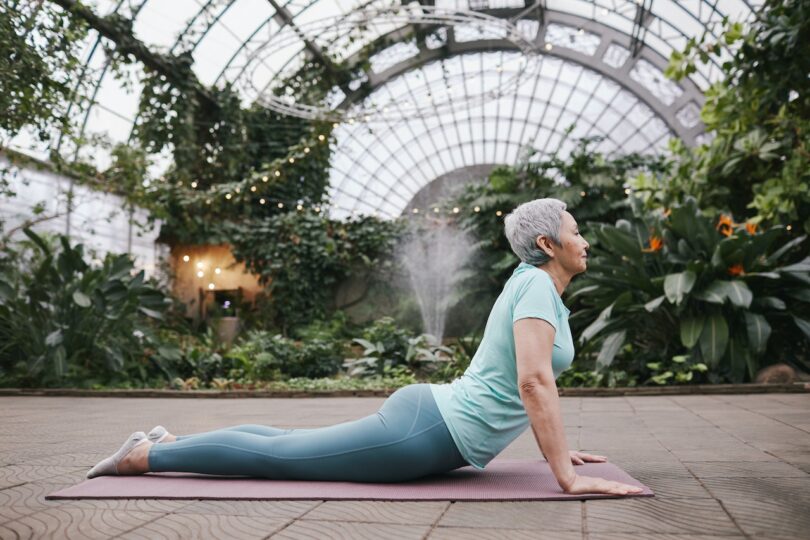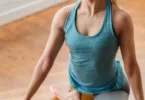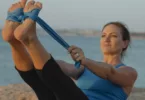Introduction: As people age, their risk of falls increases. This is due to a combination of factors such as decreased muscle mass and strength, poor balance, and decreased flexibility. Yoga is a form of exercise that can help seniors reduce their risk of falls and improve their balance. In this blog post, we will discuss the benefits of yoga for seniors and how it can help reduce the risk of falls and increase balance.
The Benefits of Yoga for Seniors
Yoga is a form of exercise that can help seniors improve their overall health and well-being. Some of the benefits of yoga for seniors include:
- Increased flexibility: Yoga helps to increase flexibility and range of motion, which can help to prevent falls. As we age, our muscles and joints become stiffer, making it harder to move around. Yoga can help to loosen up the body and make it easier to move.
- Improved balance: Yoga can also help to improve balance, which is important for preventing falls. Many yoga poses require balance and stability, which helps to improve balance over time.
- Increased muscle strength: Yoga can also help to increase muscle strength, which can help to prevent falls. As we age, our muscles can become weaker, making it harder to maintain balance. Yoga can help to strengthen the muscles, which can help to improve balance and prevent falls.
- Reduced stress: Yoga is also known for its stress-relieving benefits. Stress can cause tension in the body, which can make it harder to maintain balance. Yoga can help to reduce stress, which can help to improve balance and prevent falls.
Yoga Poses to Help Reduce the Risk of Falls
There are several yoga poses that can help to reduce the risk of falls and improve balance. Some of the most effective poses for seniors include:
- Tree Pose (Vrikshasana): This pose helps to improve balance and stability. It also helps to strengthen the legs and core, which can help to prevent falls.
- Chair Pose (Utkatasana): This pose helps to strengthen the legs and core, which can help to improve balance and prevent falls.
- Warrior III (Virabhadrasana III): This pose helps to improve balance and stability. It also helps to strengthen the legs and core, which can help to prevent falls.
- Downward-Facing Dog (Adho Mukha Svanasana): This pose helps to improve flexibility and range of motion. It also helps to strengthen the legs and core, which can help to improve balance and prevent falls.
Conclusion
Yoga is a great form of exercise for seniors. It helps to increase flexibility and range of motion, improve balance, increase muscle strength, and reduce stress. By practicing yoga regularly, seniors can reduce their risk of falls and improve their overall health and well-being. Remember to always consult with your doctor or physiotherapist before starting a new exercise program.
Frequently Asked Questions
Q: Is yoga safe for seniors?
A: Yes, yoga is generally safe for seniors. It is a low-impact form of exercise that can help to improve balance, flexibility, and muscle strength. However, as with any exercise, it is important to consult with a doctor or physiotherapist before starting a yoga practice.
Q: Can yoga prevent falls in seniors?
A: Yes, yoga can help to reduce the risk of falls in seniors. Yoga poses that focus on balance and stability can help to improve balance, which can in turn reduce the risk of falls. Additionally, yoga can help to increase flexibility and muscle strength, which can also help to prevent falls.
Q: What are some of the best yoga poses for seniors?
A: Some of the best yoga poses for seniors include Tree Pose, Chair Pose, Warrior III, and Downward-Facing Dog. These poses help to improve balance, flexibility, and muscle strength, which can help to reduce the risk of falls.
Q: How often should seniors practice yoga?
A: The frequency of yoga practice will depend on the individual and their fitness level. It is recommended to start with a few times a week and gradually increase the frequency as the body adapts. It’s always best to consult a doctor or physiotherapist to get the best advice on how often to practice yoga.
Q: Is it necessary to have a yoga mat to practice yoga for seniors?
A: While a yoga mat can provide cushioning and grip, it is not necessary to have one to practice yoga. Yoga can be done on a carpeted floor or a towel. The most important thing is to find a comfortable and safe surface to practice on.
Read more:
- The Rising Popularity of Yoga Among Senior Citizens
- Improve Flexibility, Balance, and Well-being: A Review of ‘Chair Yoga for Seniors Over 60
- The Relationship Between Yoga and Heart Health in Seniors
- Yoga Bolsters for Seniors: A Guide to the 3 Top Picks
- Yoga in Rural Areas: Making Yoga Accessible for Seniors in Less Populated Areas








Leave a Comment